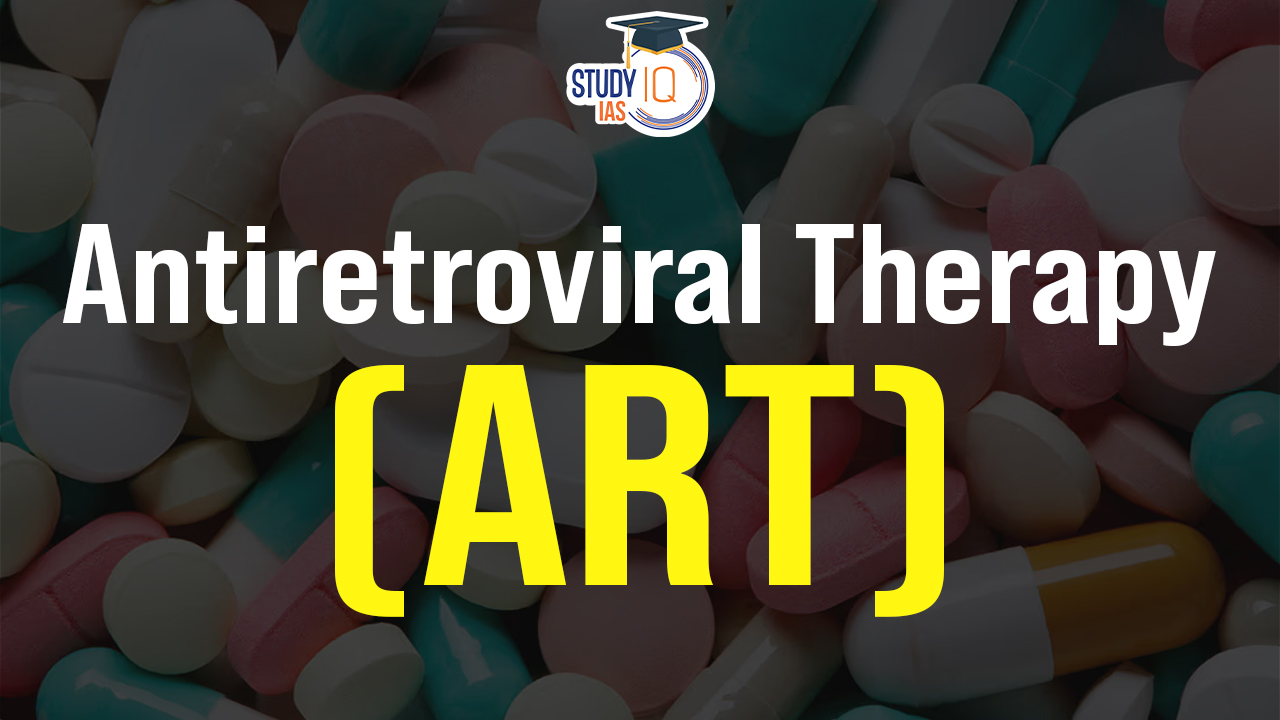Table of Contents
Context: April 1 marked 20 years since the launch of Free Antiretroviral Therapy (ART) for Persons Living with HIV (PLHIV) in India.
Antiretroviral Therapy (ART)
Antiretroviral therapy (ART) is a combination of medications used to treat HIV infection. HIV is the human immunodeficiency virus that attacks the body’s immune system. ART can’t cure HIV, but it can help people with HIV live long and healthy lives by reducing the amount of virus in the body (viral load). This helps protect the immune system and prevent illnesses.
Historical Context for Antiretroviral Therapy for Persons Living with HIV in India
- Early Challenges: Initially in the 1980s, HIV/AIDS was deemed a fatal diagnosis, met with fear and discrimination.
- The first antiretroviral drug, AZT (zidovudine), was approved by the US Food and Drug Administration (US FDA) in March 1987,
- Three more drugs were approved soon after in 1988
- A new class of antiretroviral drugs, protease inhibitors introduced in 1995.
- However, access to these medicines remained limited for most of the world’s population except in some high-income countries.
- The first antiretroviral drug, AZT (zidovudine), was approved by the US Food and Drug Administration (US FDA) in March 1987,
- Global and National Response: The Millennium Summit in 2000 and the creation of the Global Fund in 2002 set the stage for universal access goals.
- India’s 2004 free ART rollout was a response to the high number of PLHIV and limited treatment access.
Evolution of Free ART
- Initial Coverage: At the inception of the free ART initiative, only 7,000 of India’s 5.1 million PLHIV were receiving ART.
- Expansion: From fewer than 10 ART centers initially, the program expanded to about 700 ART centers and 1,264 Link ART centers, serving approximately 1.8 million PLHIV.
- Impact: As of 2023, HIV prevalence among 15-49-year-olds reduced to 0.20%, with significant declines in new infections and AIDS-related deaths compared to global averages.
| Data | Value |
| HIV prevalence in 15-49 years (2023) | 0.20 (confidence interval 0.17%-0.25%) |
| PLHIV burden (estimated, end of 2023) | 2.4 million |
| India’s share in global PLHIV (2023) | 6.3% (from around 10% two decades ago) |
| Percentage of PLHIV who know their status (end of 2023) | 82% |
| Percentage of PLHIV on ART (end of 2023) | 72% |
| Percentage of PLHIV with suppressed viral load (end of 2023) | 68% |
| Decline in annual new HIV infections in India (compared to 2010) | 48% |
| Decline in annual AIDS-related mortalities in India (compared to 2010) | 82% |
Complementary Initiatives
- Broad Approach: Success attributed to free diagnostics, prevention of parent-to-child transmission (PPTCT), and managing co-infections like TB.
- Evolution of Treatment Criteria: ART eligibility criteria evolved from a CD4 count threshold to a ‘Treat All’ policy, enhancing virus suppression and transmission prevention.
- Patient-Centric Services: Introduction of multi-month dispensing of medicines, free viral load testing, and newer drugs like Dolutegravir (DTG).
Future Goals
- NACP Phase 5 Objectives: Aim to reduce new infections and AIDS-related deaths by 80% by 2025 and eliminate vertical transmission of HIV and syphilis.
- 95-95-95 Targets: By 2025, ensure 95% of PLHIV know their status, 95% of diagnosed receive ART, and 95% on ART achieve viral suppression.
We’re now on WhatsApp. Click to Join
Challenges Ahead
- Delayed ART Enrollment: A significant proportion of patients present with advanced disease.
- Adherence and Dropout: Improved health leads to missed doses and treatment dropout, risking resistance development.
- Sustained ART Availability: Ensuring consistent ART supply, especially in remote areas.
- Integration and Training: Need for integration with other health programs and continuous staff training.
- Focus on Mortality Reduction: Systematic death reviews and access to advanced diagnostics are crucial.
Achievements and Acknowledgments
- Political Will and Support: Success driven by consistent government backing, sufficient funding, and community involvement.
- Service Delivery Innovations: People-centric service modifications and expansion of coverage played key roles.
- Guide for Other Health Initiatives: The free ART initiative’s success offers valuable lessons for addressing other health challenges, like hepatitis C.


 GPS Spoofing and Its Impact in India: A ...
GPS Spoofing and Its Impact in India: A ...
 Amrit Gyaan Kosh Portal: A Comprehensive...
Amrit Gyaan Kosh Portal: A Comprehensive...
 UpLink Initiative: Launched by World Eco...
UpLink Initiative: Launched by World Eco...





















